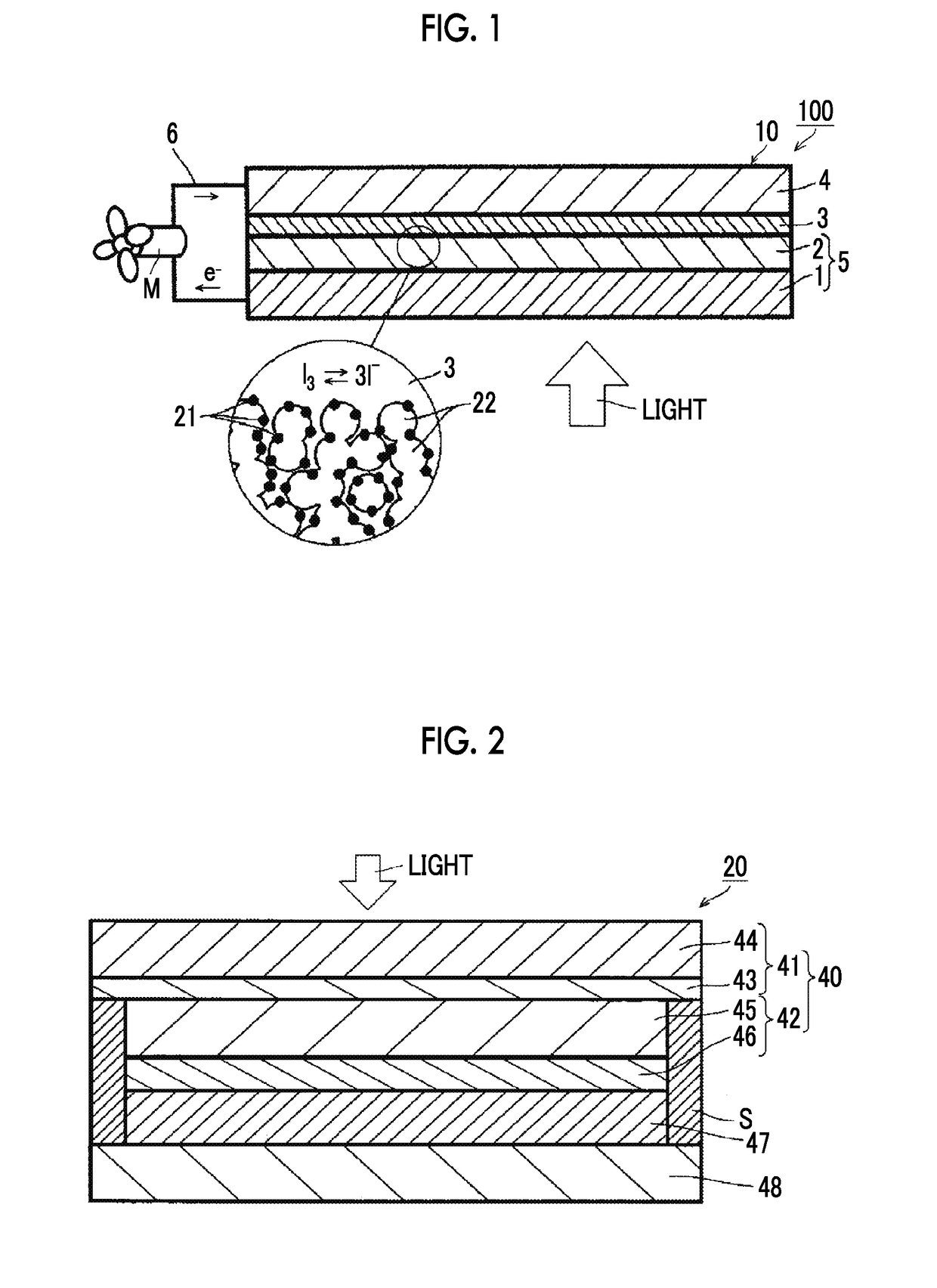Photoelectric conversion element, dye-sensitized solar cell, dye composition, and oxide semiconductor electrode
a conversion element and solar cell technology, applied in the direction of methine/polymethine dyes, electrolytic capacitors, ruthenium organic compounds, etc., can solve the problems of natural limitations in throughput improvement, cost, and improvement, and achieve the effect of reducing large deviation width among elements, and large deviation of photoelectric conversion efficiency
- Summary
- Abstract
- Description
- Claims
- Application Information
AI Technical Summary
Benefits of technology
Problems solved by technology
Method used
Image
Examples
example 1 (
Synthesis of Metal Complex Dye)
[0264]The structures of the metal complex dyes D-E1 to D-E11 synthesized in the present Examples are shown below.
[0265]In Examples, metal complex dyes D-E1-1 to D-E1-3 may be collectively referred to a metal complex dye D-E1 in some cases. This shall also apply to a case of metal complex dyes D-E2 to D-E11.
[0266]Each of the metal complex dyes D-E4-1 to 3 is represented by a metal complex dye of each of Formulae (1) to (3) in which M1 is a potassium ion and M2 is a proton, but may be the metal complex dye in which M1 is a proton and M2 is a potassium ion or may be a mixture of the metal complex dye in which M1 is a potassium ion and M2 is a hydrogen atom, and the metal complex dye in which M1 is a hydrogen atom and M2 is a potassium ion. This shall also apply to a case of metal complex dye D-E5 to D-E11.
[0267]Incidentally, in the metal complex dyes D-E to D-E11, X represents —NCS or —SCN, and in the following metal complex dyes, Et represents ethyl, nBu...
example 2 (
Production of Dye-Sensitized Solar Cell)
[0311]A dye-sensitized solar cell 20 (in a scale of 5 mm×5 mm) shown in FIG. 2 was produced by a procedure shown below, using each of the metal complex dyes synthesized in Example 1 or each of the following comparative compounds (C1) to (C3), and the following performance was evaluated. The results are shown in Tables 2-1 and 2-2 (which are sometimes referred to Table 2).
[0312](Manufacture of Light-Receiving Electrode Precursor)
[0313]An electrically conductive support 41 having a fluorine-doped SnO2 electrically-conductive film (transparent electrically-conductive film 43, film thickness of 500 nm) on a glass substrate (substrate 44, thickness of 4 mm) was manufactured. Further, the glass substrate having the SnO2 electrically-conductive film formed thereon was immersed in a 40 mM aqueous titanium trichloride solution for 30 minutes, washed with ultrapure water and ethanol, and then calcined at 450° C. to form a thin film layer of a titania co...
PUM
| Property | Measurement | Unit |
|---|---|---|
| molar ratio | aaaaa | aaaaa |
| molar ratio | aaaaa | aaaaa |
| molar ratio | aaaaa | aaaaa |
Abstract
Description
Claims
Application Information
 Login to View More
Login to View More - R&D
- Intellectual Property
- Life Sciences
- Materials
- Tech Scout
- Unparalleled Data Quality
- Higher Quality Content
- 60% Fewer Hallucinations
Browse by: Latest US Patents, China's latest patents, Technical Efficacy Thesaurus, Application Domain, Technology Topic, Popular Technical Reports.
© 2025 PatSnap. All rights reserved.Legal|Privacy policy|Modern Slavery Act Transparency Statement|Sitemap|About US| Contact US: help@patsnap.com



